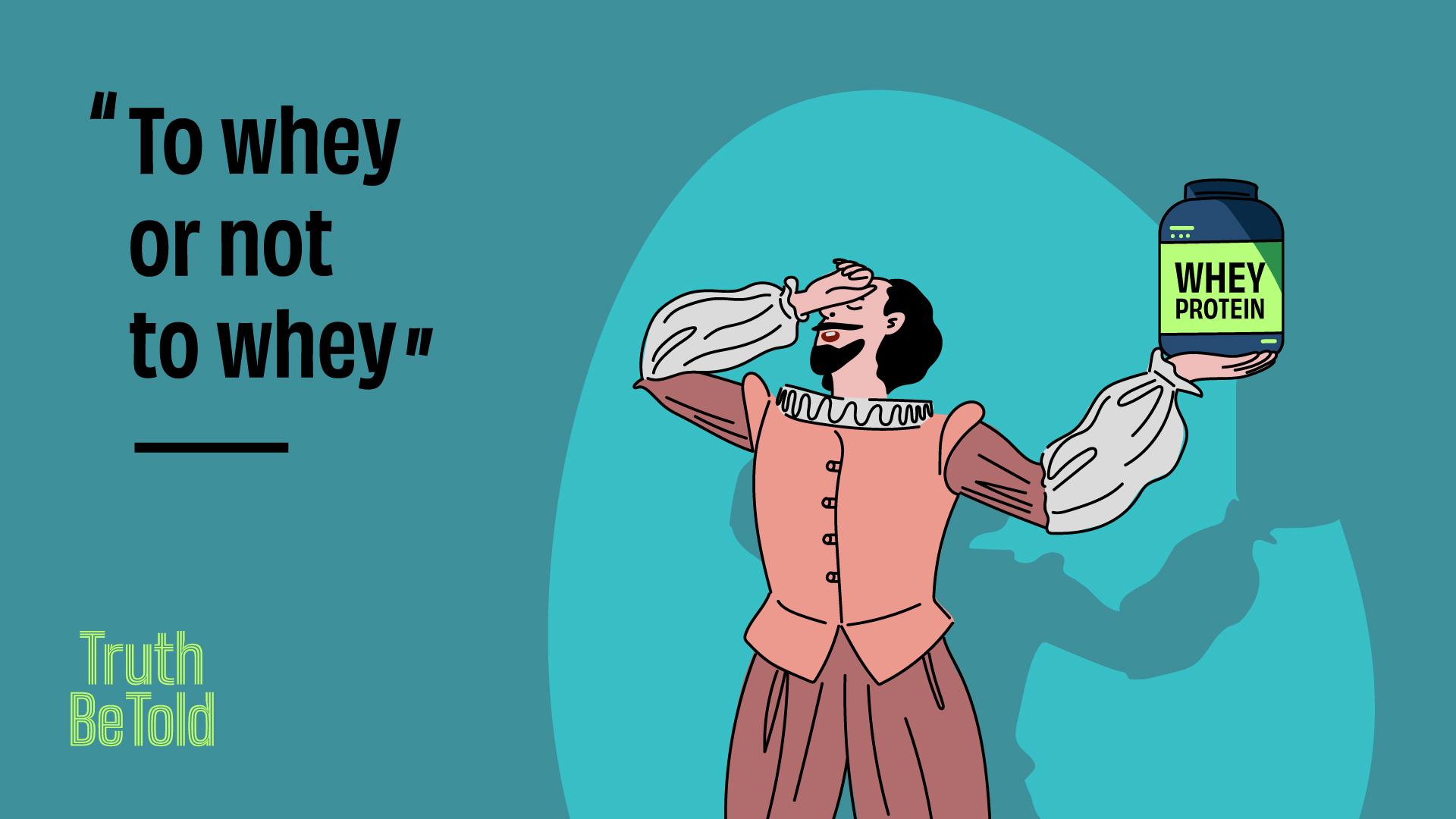Is whey protein a steroid?
What are the benefits of whey protein? And is it only to bulk up?
The most trustworthy source of food and
fitness journalism in the country.
Editor’s Note : In today’s issue, Nayantara Menon Bagla, a chef and functional nutrition coach, makes a case for whey protein, busts some common myths and suggests her preferred protocol to start protein supplementation.
Now look, this is a controversial issue, and please note that The Whole Truth uses whey in its products. While this newsletter is published independently of the company’s product operations (read our manifesto), I want to make you aware of this potential conflict of interest. Please keep this in mind as you read on.
Protein shakes: they’ve been bashed by Ayushman Khurana, Akshay Kumar, and probably some of your uncles too.
“Protein shakes are really bad,” Ayushman said on a podcast with an erstwhile fitness influencer. “It takes three years to digest one scoop of protein. It stays in your body.”
“I am against protein shakes and steroids. Pata nahi kyu lete hai?” Akshay Kumar told the Hindustan Times. “Usse [supplements] bahut jaldi weight loose kar jaate hain ye log. That they think is the right way. But they forget there are a lot of other problems attached to it.”
But why talk about others when I was a sceptic too, absolutely convinced until a few years ago that these powders were the devil’s elixir, used only by gym-goers in shady neighbourhoods.
Oh, the poor younger me. How wrong I was.
I now know better: Protein powders are not bad. It’s not some Frankenstein food our bodies weren’t meant to digest. It’s not a bro thing and my fellow ladies are welcome to the protein party too.
It took me time to get there, many months of habit-building and years of learning to truly grasp the ‘why’ of protein supplementation and the ‘how’ of doing it right. (There are always ways of doing it wrong.)
Now I know this debate is not gonna stop. Some of you may not agree with me at all. That’s fine. So I have a limited objective for this article: share the hard facts I’ve learnt and my perspective on whey supplementation. That’s all. You decide what’s best for your body.
1. Start with the ‘why’
Take a step back.
Why are we discussing whey protein? Because it’s a supplement.
What is a supplement? Something that is added to complete, enhance, or improve something else.
What is this “something else” in this case? Our protein intake.
So the first step is to determine how much protein we need and whether we are consuming enough. You don’t need any supplements if you are consuming enough.
Now how much protein do you need?
According to the US RDA, that’s 0.8 grams per kilogram of body weight to live a balanced and healthy life. So if you are a 70kg man, you need 56 grams of protein daily.
But that’s just the minimum to avoid being labelled protein-deficient. (And who wants to be labelled as that?)
The requirement can further change the basis of the activity levels and fitness goals up to 2 gms per kg of body weight. It really depends. So figure that out first. Here is a calculator.
Now let’s say your requirement is 100gms of protein. If you can meet this base need from your natural foods and regular diet, then nothing like it. Don’t even look at that protein supplement.
But most people I know are not able to. So here is a sample calculation.
Let’s say you have a glass of milk and two whole eggs for breakfast, a bowl of lentils and vegetables for lunch, an apple as a snack, and a piece of chicken or fish for dinner. How much protein does it provide? Milk contains approximately 8 grams of protein per glass, and two whole eggs offer roughly 12 grams. The bowl of lentils and vegetables provides an additional 15 grams, while the chicken or fish adds about 25 grams of protein. By incorporating an apple as a snack, we can add an extra 1-2 grams of protein. In total, this diet would provide roughly 60 grams of protein. 
See what happened here? There is a gap: 100gms needed, 60gms incoming from your diet — and supplements exist to fill the gap. They are not meant to replace your diet.
And in the world of protein supplements, whey protein is among the best options.
What is the whey to the truth?
Subscribe to find out
2. Why ‘Whey’
Whey is the liquid part of milk that separates during the cheese and curd-making process. This liquid contains a high amount of protein, and it is processed into a powder form that can be easily mixed into drinks or used in recipes. This is the whey protein supplement that you can find in the market.
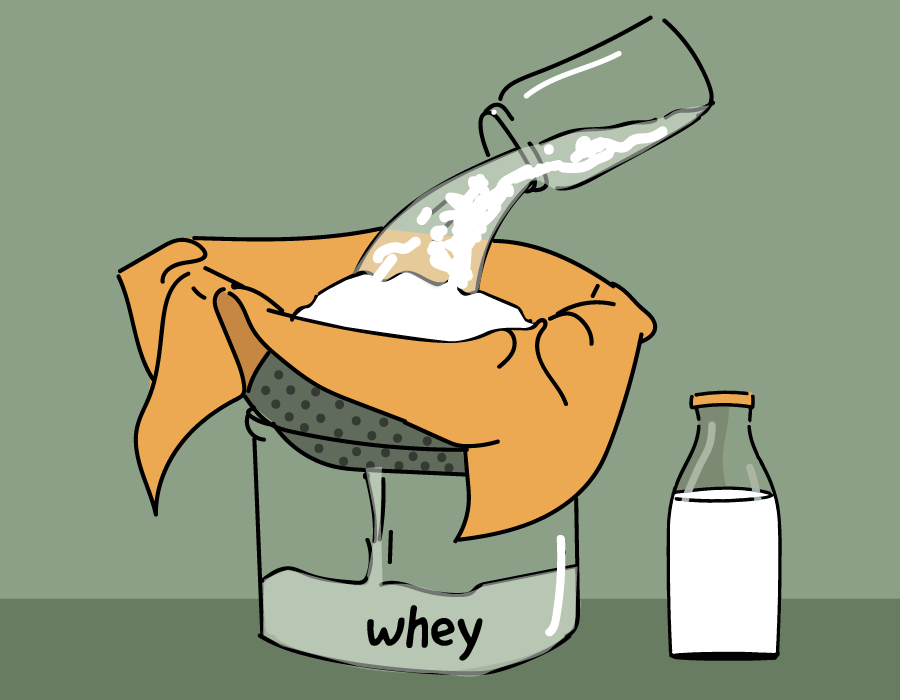
Why is it so revered?
Three key reasons:
One, it is a ‘complete protein source’: it contains all nine essential amino acids that the body cannot produce on its own and must obtain from food. For context, there are 20 amino acids, and our bodies can produce 11 of them, while the remaining nine must come from our diet. (Examples of other complete protein sources include animal-based foods such as meat, fish, eggs, and dairy, as well as plant-based foods like quinoa, buckwheat, and soy.)
Two, it is a ‘fast-digesting’ protein source: it is quickly broken down and absorbed by the body. (Yup, Ayushman got this totally wrong — no idea where he sourced it from!)
This is great news for those who are looking to quickly refuel their muscles after a workout or to keep hunger at bay. On the other hand, there are slow-digesting proteins like casein — the main protein in cow’s milk — which are ideal for those who want to maintain a steady supply of protein over a longer period of time.
Third, it’s the most calorie-efficient form of protein: As a rule of thumb, a 30-gram scoop of whey isolate (more on this later) will provide you with anywhere between 24-27 grams of protein, and since that’s all there is in the scoop, it will cost you around 100 calories. This simple equation is why I love whey — it’s the most calorie-efficient form of protein.
It’s great, really.
What is the whey to the truth?
Subscribe to find out
And while we are at it, let’s just be clear: whey protein is NOT a steroid.
You know what a steroid is? They are man-made hormones, such as testosterone, that are used to enhance athletic performance. Whey protein does not contain any of these substances — no anabolic steroids or performance-enhancing drugs (PEDs). It’s simply a protein source derived from milk.
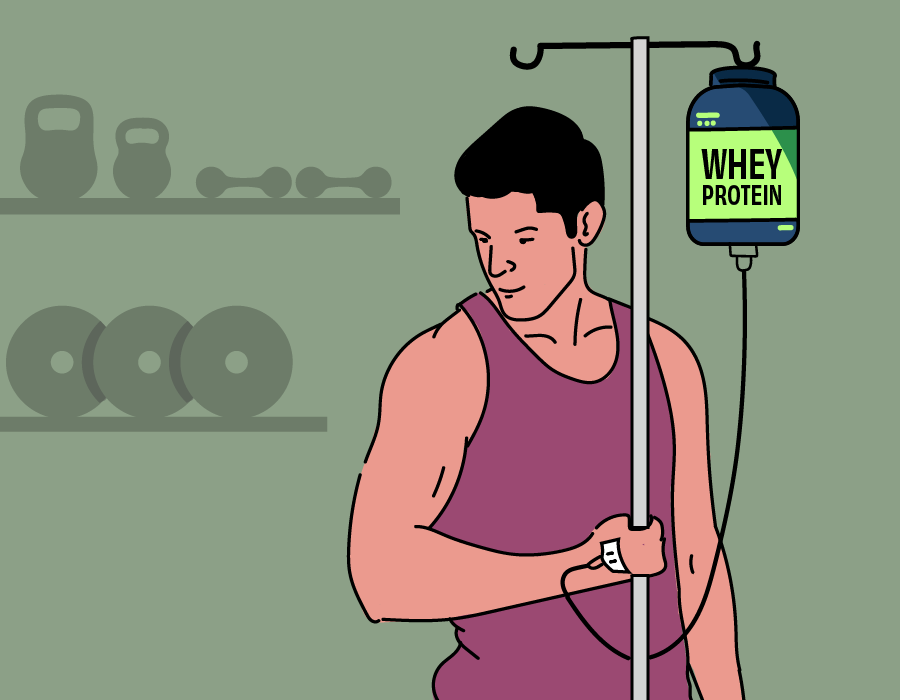
And despite what some may think, whey protein won’t magically turn you into a bodybuilder. It’s a common misconception perpetuated by marketing tactics featuring buff men. In reality, building significant muscle takes dedication, proper diet, and discipline over time. Protein is just one part of the puzzle, not a shortcut. So, ladies, don’t be afraid to add whey to your diet!
These are all the basics you need to know. Now let’s come to the actionables.
3. What to buy and how to get started
In the market, you will find two main types: ‘whey protein concentrate’ and ‘whey protein isolate’.
Your choice between the two should depend on your goals, budget, and lifestyle. Whey protein concentrate has a lower proportion of protein, ranging from 30-80%, and higher amounts of carbs and fats. It’s a good option to start with, as it’s the least processed form of whey and contains many other nutrients. However, it does come with some fat and carbs.
Whey protein isolate will be a better choice if you want to strictly minimise carb and fat intake while maximising protein. This is because it’s almost entirely protein with practically no fat or carbs. Moreover, isolate is for you if you’re lactose intolerant since it has less than 1% lactose.
The thing to remember is: always start slowly.
Whey protein can sometimes cause stomach discomfort or acne if people are unaware of the proper protocols.
That’s because our livers are not used to processing protein in a concentrated dose. Or if you are lactose intolerant.
As a nutrition coach, I always recommend my clients start slowly and gradually increase their supplement intake. Suddenly adding protein to an otherwise low-protein, carb-heavy diet — which is most Indian homes — can overwhelm your digestive system.
Here’s a simple protocol:
1. Start with a small pack of whey protein concentrate or isolate, and mix a quarter scoop with water for the first 3 days.
2. Increase to half a scoop for the next 4 days, and then a full scoop thereafter.
3. Monitor your stomach and skin for any discomfort or breakouts, which should settle down after a few days.
4. After 15 days, decide whether to buy a larger batch.
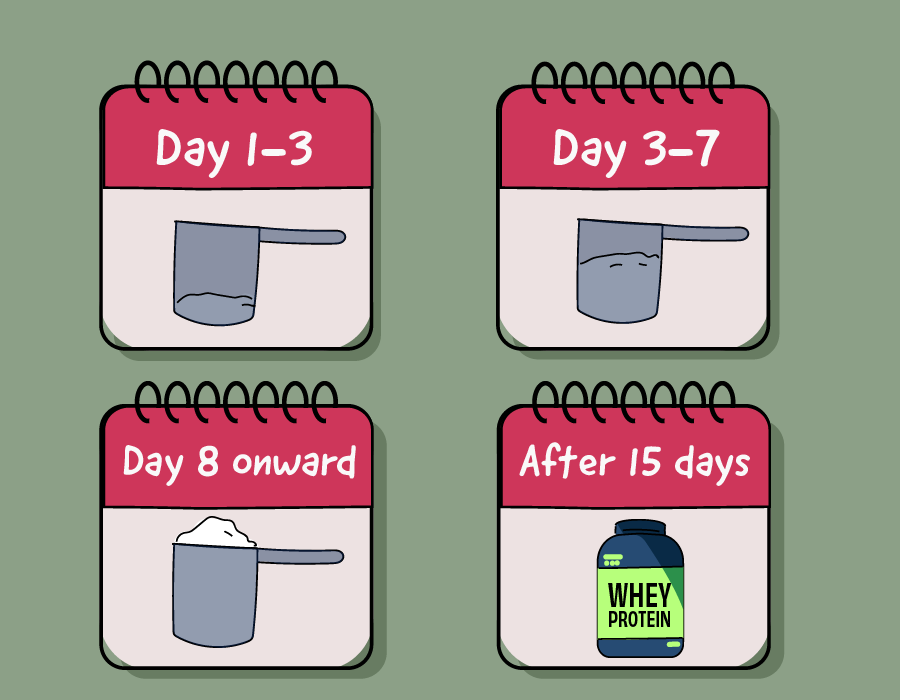
Pay close attention to how your stomach feels, how your gut responds, and if your skin has any breakouts. Feeling queasy for the first few days and for your stomach to rumble and roll is normal, but it should settle down. After testing the product for 15 days, decide whether or not to purchase a larger batch.
And last, but most importantly, choose a brand wisely and always read the label. Look for brands that list whey or a protein blend as ingredients, and avoid those with more than four or five ingredients.
You know what? The best example of what NOT to choose comes from Akshay Kumar only.
Look at the product he endorses Horlicks Protein Plus.
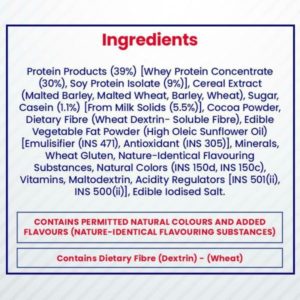
Please read the label: the product has over twenty ingredients, and when compared to a good whey protein supplement, the Horlicks product has almost one-third the protein content, eight times the amount of carbs, eleven times the amount of sugar, and five times the amount of fat. Think about it and make an informed choice.
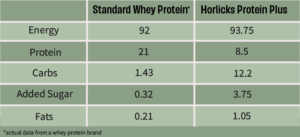
But there is no need to be blanketly cynical about every product in the market. There are good products that can help you in your fitness journey — only if you need supplementation, that is.
Click on this to sign up for the truth
